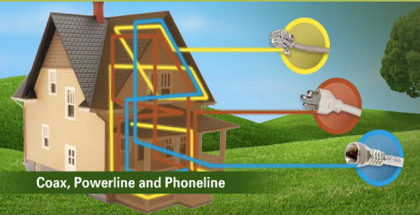“G.hn makes Sense for Any Size Service Provider,” says HomeGrid Forum
Cost, design and deployment advantages of G.hn were discussed at the NTCA IP Possibilities Conference and Expo in Kansas City, April 15-17
Beaverton, Ore., April 29, 2014
News Highlights
• G.hn makes sense for Service Providers of any size, not just the larger ones
• HomeGrid President highlighted G.hn deployment savings and universal wireline operation as key benefits for Service Providers
• Plug-and-play/customer self-install features of G.hn dramatically reduce deployment costs and time to market
• HomeGrid’s focus on Service Providers with its strong C&I program adds further significant benefit by reducing the cost of deploying G.hn home networks
“G.hn makes perfect sense as the home networking technology of choice for any Service Provider, of any size, anywhere,” said HomeGrid Forum president John Egan at the NTCA IP Possibilities Conference & Expo in Kansas City, April 15-17.
Speaking in the Emerging Technologies Track on “Understanding the new G.hn Standard,” Egan explained why G.hn is a great technology for Service Providers, including those that are providing rural broadband services. Egan highlighted that G.hn home networking technology, based on ITU-T standards, was designed from the outset to be robust, low-cost and flexible, delivering a great customer experience, cost benefits and ease of deployment for service providers. G.hn operates over any wire in the home. With HomeGrid’s strict, well-established and robust C&I and Certification regime, Service Providers can be confident that they have selected the technology that meets their needs, which can be moved to market without extended lab tests thus saving costs and speeding roll-out of reliable service solutions. This is important everywhere, but provides a particular benefit in rural environments where installation and support costs are a constant challenge. With the merger of HomeGrid and the HomePNA Alliance and last year, Egan pointed out that Service Providers can also be confident that there is a clear path for transitioning their HomePNA deployments to G.hn in a planned and cost-effective fashion.
The fact that G.hn systems can be customer self-installed and “just work” gives Service Providers the option of considerably reducing deployment costs by eliminating the need for installers to visit homes.
G.hn was defined in the ITU-T as a standard technology, open to any company to develop from the published specifications. This ensures that there are multiple choices for both silicon and systems so Service Providers need not be tied to one supplier, thus creating a very competitive market.
Egan highlighted that G.hn silicon is the same – regardless of the medium. “Whether a Service Provider decides to use phoneline, powerline, coax or fiber for their home networks, it’s the same G.hn chip inside. Vendors need only design once with only minor modifications needed to attach to the particular wire type. This also gives Service Providers, technicians and customers a familiar look and feel to G.hn systems, regardless of the wire type used,” Egan added, “It also reduces R&D costs and engineering, which results in lower costs for Service Providers.”
Egan presented the progress of G.hn as the new technology finding favor around the globe. “A wide range of Service Providers in Asia, Europe and North America have completed field trials, and the first RFPs are already out. All Service Providers, including those providing rural broadband services, should take note of this rapid progress and consider including G.hn in their home networking options,” concluded Egan.
Many new G.hn systems will be on display at HomeGrid Forum’s comprehensive home networking demonstration at Computex in Taipei, Taiwan, 02-07 June 2014. HomeGrid will be located in Exhibition Hall 1, booth 1F A0926, to arrange a briefing to meet with the Forum’s representatives please get in touch.







